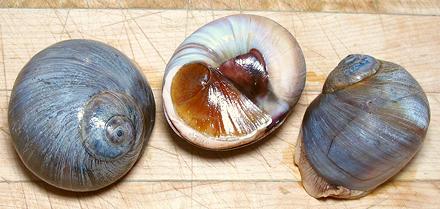

He discovered that the tiny mammals demonstrated different side effects depending on which component of the venom he injected into them. According to Nature, Baldomero ‘Toto’ Olivera of the University of Utah spent years injecting the venom into mice.

National Institutes of Health A cone snail engulfing its paralyzed prey.Īustralian scientists first isolated the venom into its individual parts in 1977, and they’ve been working to use the so-called conotoxins for good ever since. Scientists are constantly studying the snail’s venom to isolate certain properties, as some substances in the toxins can be adapted for painkilling drugs. The Surprising Medical Uses For Cone Snail Venomĭespite its reputation as a killer, the cone snail isn’t all bad. However, scientists are studying ways in which the cone snail’s dangerous venom can be used for good. The only thing doctors can do is prevent the venom from spreading and try to remove the toxins from the injection site.

There is no anti-venom available for cone snail stings. Instead of pain, you could feel numbness or tingling. According to WebMD, once the poison enters your system, you may not experience symptoms for a few minutes or even days. Just because human deaths are uncommon, it doesn’t mean you should throw away caution.Ī few microliters of cone snail toxin is powerful enough to kill 10 people. It’s even colloquially known as the “cigarette snail,” because if you’re stung by one, you’ll only have enough time left to smoke a cigarette before you die. The geography cone, or Conus geographus, is the deadliest, with more than 100 toxins in its six-inch body. Of the more than 700 species of cone snails, only a few are venomous enough to kill humans. A 2004 report in the journal Nature attributed about 30 human deaths to cone snails. Unless someone steps on the sea creature, startles one while diving, or picks up a shell with the deadly animal inside, humans and cone snails don’t often come into contact. Luckily, humans aren’t very tasty or digestible to cone snails.

#MOON SNAIL SKIN#
Unfortunately for them, the proboscis of a cone snail can penetrate gloves, because the snail’s harpoon-like weapon is made for the tough outer skin of fish. Divers who are unfortunate enough to pick up the wrong shell often assume their diving gloves offer protection against any potential harms. Victims often don’t even know what hit them. Part of what makes the aquatic snail so deadly is the lack of pain its sting produces. Of course, the proboscis is too small to pull in a human - but it can still pack a venomous punch. Once the fish is completely paralyzed, the cone snail expands its mouth and swallows it whole. The proboscis not only delivers the toxins - it allows the snail to draw the fish toward it with a sharp barb on the end. The snail’s attack is a thing of efficiency. Victims may not even feel the sting of the proboscis because the attack is instantaneous and the venom has paralytic, pain-killing properties. Once the nose of a cone snail senses food nearby, the animal deploys a sharp proboscis, or a needle-like protrusion, from its mouth. They feast on fish, marine worms, or even other snails if food is scarce, according to the Aquarium of the Pacific. These predatory sea creatures use a sophisticated detection system to seek out prey. Wikimedia Commons The cone snail shell is beautiful, but inside is a deadly weapon.


 0 kommentar(er)
0 kommentar(er)
